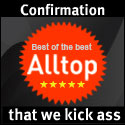RFID Adoption Gaining Slowly
Elizabeth Roop wrote a nice overview of the RFID market in hospitals, quoting from yours truly, John Pantano of Radianse, and Gregg Malkary of Spyglass Consulting Group. This is where I see the sweet spot for RFID:
“Given the inherently mobile nature of healthcare,
RFID offers potential benefits that can impact quality of care, outcomes,
and healthcare delivery costs. Many activities that occur in healthcare
require the coming together of a very specific group of workers and
assets in order to run a diagnostic test or deliver therapy” such
as cardiac catherization, interventional radiology, and gastroenterology
studies, says Tim Gee, principal, Medical Connectivity Consulting. “Complex
logistics are required to pull these events together, deliver safe and
efficacious care, capture charges, and document everything. So tracking
equipment, personnel, and patients throughout the care delivery process
can greatly impact both clinical and financial outcomes.”
John Pantano sees the need combining with the inevitable fall in prices and early experience showing real returns on investment.
“While it’s not a new technology, RFID is
enjoying a renaissance,” says John Pantano, cofounder and vice
president of marketing for Radianse. “Combined with specialty
location software, RFID’s value goes up and, based on technology
innovations, its price and size are going down. It’s truly a great
problem solver. Attaching active RFID tags to equipment for tracking
was an obvious application, but we’ve seen just as much, if not
more, interest in benefits around patient location and flow applications.
Radianse customers are applying RFID to make big improvements in their
processes, including throughput and patient satisfaction. Three years
ago, we were talking about the potential; today hospitals have proven
ROI [return on investment]. The potential has become a promise.”
Gregg notes some hidden costs of RFID deployments and his 2005 study provides a benchmark for market growth.
A 2005 survey by Spyglass Consulting Group found that
while only 10% of participating healthcare organizations were currently
using RFID to track mobile equipment, 45% indicated they planned to
implement RFID systems by the end of 2006. Further, while only 8% of
responding organizations were using RFID for patient tracking, 21% anticipated
they would be implementing them by early 2007.
The Spyglass report also found that active RFID applications,
which can be tracked on an RFID network, were far more popular than
passive applications, which require a nearby reader. That is in spite
of the higher price for active RFID tags—anywhere from $50 to
$100 per tag, plus the network infrastructure, as compared with 50 cents
or less for passive tags.
A couple points didn't make the story. First, because RFID is an enabling technology (and not an end in itself) different positioning technologies are better suited for some applications than others - in other words, there is no single ideal or best RFID technology. Just like selecting computer hardware and operating systems, chose the best application first and then buy whatever RFID technology supports that application. The other point to consider is the cross-silo nature of needs assessment and vendor selection - nursing, physicians, biomeds and IT will need to work together, with all the various clinical departments involved, to ensure a good outcome.



